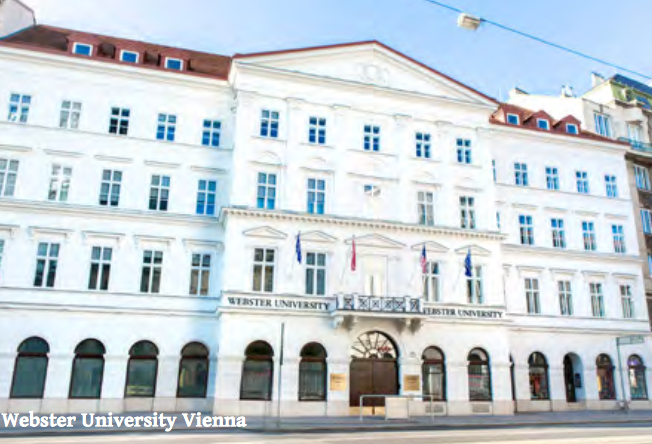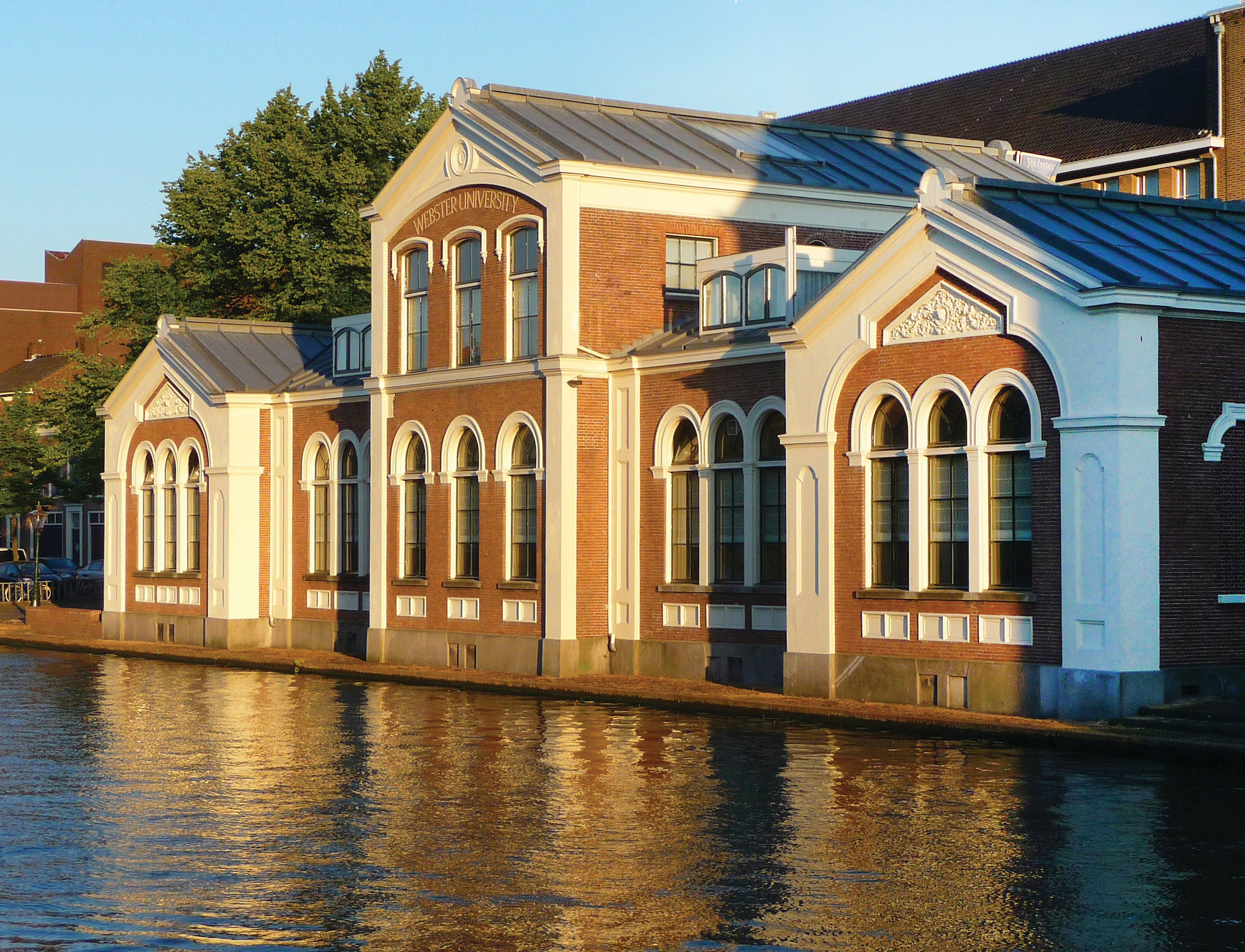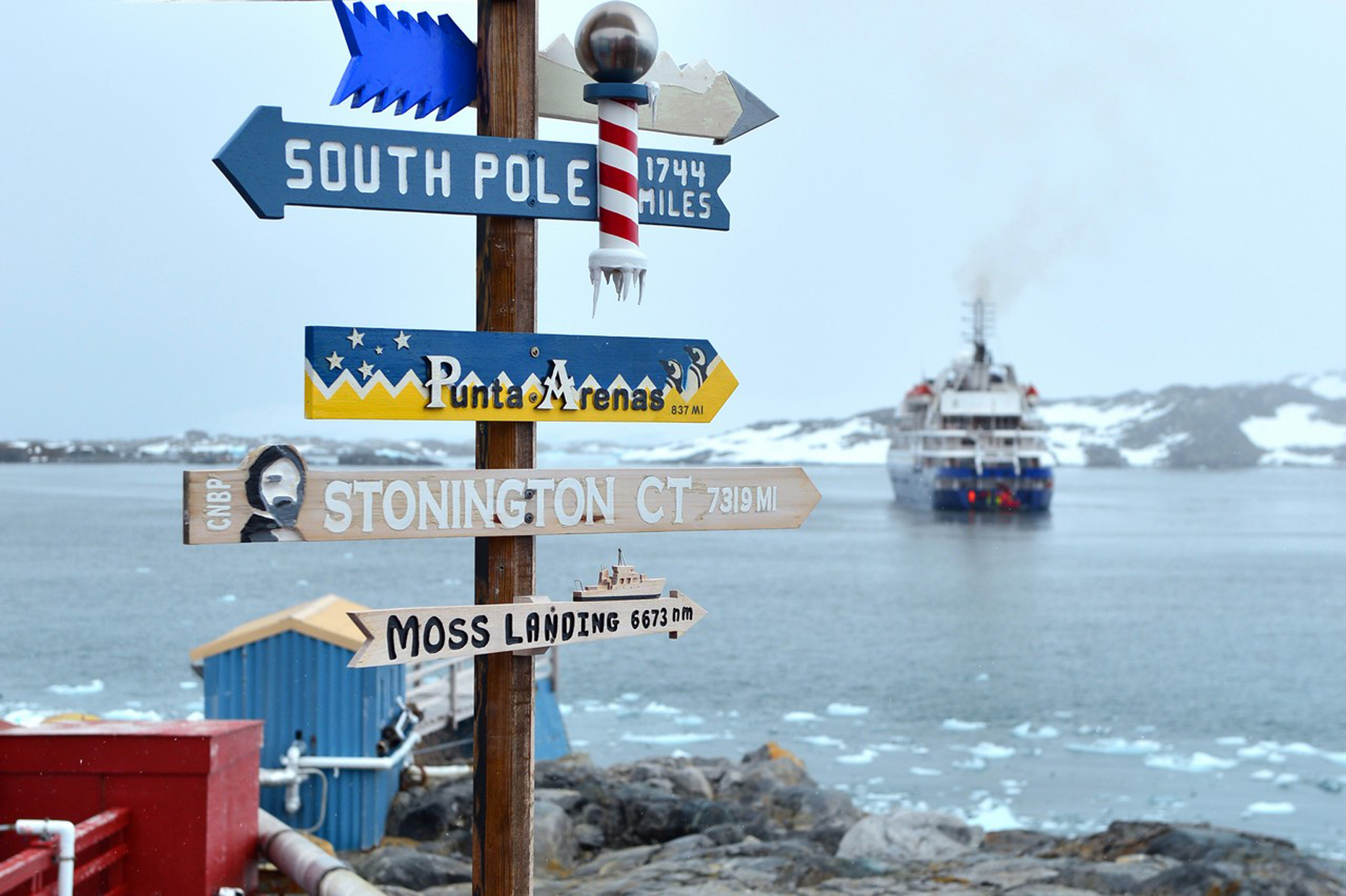
By Molly Petersen Skovgaard
 University is a perfect time for individuals to gain once-in-a- lifetime experiences. And what could be more adventurous than studying abroad for a semester? Webster University has developed a multicultural society by creating a global network with a mission to enable students to welcome diversity and expand their opportunities. Webster offers students plenty of choices for studying abroad, as they can choose between eight locations: Austria, Italy, Greece, The Netherlands, England, Ghana, U.S and Switzerland. So if studying abroad sounds exciting to you, here is a little more information about the seven other Webster campuses.
University is a perfect time for individuals to gain once-in-a- lifetime experiences. And what could be more adventurous than studying abroad for a semester? Webster University has developed a multicultural society by creating a global network with a mission to enable students to welcome diversity and expand their opportunities. Webster offers students plenty of choices for studying abroad, as they can choose between eight locations: Austria, Italy, Greece, The Netherlands, England, Ghana, U.S and Switzerland. So if studying abroad sounds exciting to you, here is a little more information about the seven other Webster campuses.
 If you adore vast green spaces, are a fan of contemporary music and enjoy cities with historic charm, then Webster’s Vienna campus may be your ideal option. Vienna is the capital of Austria and is 50% nature—as well as renowned for its imperial sights, cozy wine taverns, and cultural events.
If you adore vast green spaces, are a fan of contemporary music and enjoy cities with historic charm, then Webster’s Vienna campus may be your ideal option. Vienna is the capital of Austria and is 50% nature—as well as renowned for its imperial sights, cozy wine taverns, and cultural events.
You could study abroad for a semester in a city ranked one of the most beautiful cities in the world by Forbes: Florence. Webster’s Italian site is optimal for students who appreciate art and architecture, as Florence is known as the birthplace of the Renaissance. In Florence, you could indulge in the delicious Italian cuisine or explore the acclaimed Renaissance art, architecture and monuments.
The ancient Agora, the museums at the Acropolis and the Benaki collections could all be within minutes of your university—if you chose to study abroad at Webster’s Greece campus. You could nd yourself in the birthplace of modern ideas, exploring intellectual and cultural heritage at the Athens campus. The city is engaged in many cultural events: recitals, concerts and theatres—which are just a few of many events that students can enjoy.
 Leiden is home to the Netherland’s Webster campus, which is perfect if you’ve been searching for a quaint university town great at welcoming students. Studying in Leiden comes with the benefits of affordable public transportation. There are various incredible museums and galleries for students to visit. The town is located halfway between The Hague and Amsterdam—making Leiden an accessible town to travel to or from.
Leiden is home to the Netherland’s Webster campus, which is perfect if you’ve been searching for a quaint university town great at welcoming students. Studying in Leiden comes with the benefits of affordable public transportation. There are various incredible museums and galleries for students to visit. The town is located halfway between The Hague and Amsterdam—making Leiden an accessible town to travel to or from.

Have you ever wanted to start over? Get a new job, a new home, or even a new life? The hottest destination isn’t Fiji or Tahiti—it’s Antarctica. While many think of Antarctica as a snowy wonderland south of everything, it’s also a competitive workplace. Despite the extreme weather, temperature drops as low as -89° C and skewed sunlight hours, prospective employees remain eager to apply. All for the sake of science and, depending on the job, some change.

Life in Antarctica revolves wholly on the nature of the job.
Jobs requiring transportation of goods or outdoor research mean more time braving the cold weather, while jobs cooking and sorting technical difficulties require being indoors instead. What people don’t realize is that there’s more demand than supply—meaning there are more people wanting to work than there are jobs available for people to actually work on.
In fact, statistics show that in 2015 around 1,500 people applied for the same four positions. And these positions are often limited to science-based posts (geologists, oceanologists, meteorologists and others) and support-based or trade posts (mechanic, electrician, carpenter and more). Since the Antarctic research stations are the most populated areas of the continent, Antarctica produces its very own newspaper, The Antarctic Sun. To keep it going, there’s a National Science Foundation program specifically focused on finding successful writers and artists—including photographers, historians, and painters—work in Antarctica.

Simply applying requires a lot of luck and perseverance.
Candidates would have to undergo physical and mental examinations. They might even play the role of “understudy”—waiting for another qualified employee to drop out. Cost of transporting personnel is expensive, causing future employees to commit to staying for long periods of time. To ensure their capability of doing so, prospective employees are given a trial period during the summer months to test out their “resilience” against the environment. If they pass and still manage to maintain a positive outlook, they’re then allowed to “Winter Over”—staying for roughly eight dark months with no contact from the outside world.
Living and working in Antarctica may be as foreign a concept as living and working on Mars—but it is a popular one. Documentary films, like Antarctica: A Year on Ice, Antarctic Edge 70° South, and Frozen Planet portray Antarctica as a once-in-a-lifetime adventure. The beautiful scenery, the brightness of the stars, and (in all seriousness) penguins all contribute to the expectations of the Antarctic experience. And these expectations became the driving force for the sudden competition in the Antarctic job market.
by JUMANAH ABUALKHAIR





 Your alarm is going to be your new best friend. So learn to accept it.
Your alarm is going to be your new best friend. So learn to accept it.
 University is a perfect time for individuals to gain once-in-a- lifetime experiences. And what could be more adventurous than studying abroad for a semester? Webster University has developed a multicultural society by creating a global network with a mission to enable students to welcome diversity and expand their opportunities. Webster offers students plenty of choices for studying abroad, as they can choose between eight locations: Austria, Italy, Greece, The Netherlands, England, Ghana, U.S and Switzerland. So if studying abroad sounds exciting to you, here is a little more information about the seven other Webster campuses.
University is a perfect time for individuals to gain once-in-a- lifetime experiences. And what could be more adventurous than studying abroad for a semester? Webster University has developed a multicultural society by creating a global network with a mission to enable students to welcome diversity and expand their opportunities. Webster offers students plenty of choices for studying abroad, as they can choose between eight locations: Austria, Italy, Greece, The Netherlands, England, Ghana, U.S and Switzerland. So if studying abroad sounds exciting to you, here is a little more information about the seven other Webster campuses. If you adore vast green spaces, are a fan of contemporary music and enjoy cities with historic charm, then Webster’s Vienna campus may be your ideal option. Vienna is the capital of Austria and is 50% nature—as well as renowned for its imperial sights, cozy wine taverns, and cultural events.
If you adore vast green spaces, are a fan of contemporary music and enjoy cities with historic charm, then Webster’s Vienna campus may be your ideal option. Vienna is the capital of Austria and is 50% nature—as well as renowned for its imperial sights, cozy wine taverns, and cultural events. Leiden is home to the Netherland’s Webster campus, which is perfect if you’ve been searching for a quaint university town great at welcoming students. Studying in Leiden comes with the benefits of affordable public transportation. There are various incredible museums and galleries for students to visit. The town is located halfway between The Hague and Amsterdam—making Leiden an accessible town to travel to or from.
Leiden is home to the Netherland’s Webster campus, which is perfect if you’ve been searching for a quaint university town great at welcoming students. Studying in Leiden comes with the benefits of affordable public transportation. There are various incredible museums and galleries for students to visit. The town is located halfway between The Hague and Amsterdam—making Leiden an accessible town to travel to or from.

